Algal bloom has entered Coorong, as minister says Murray water could be used to flush system
The environment minister says recent storms have spread the algal bloom, but admits there’s no real known way to solve it.
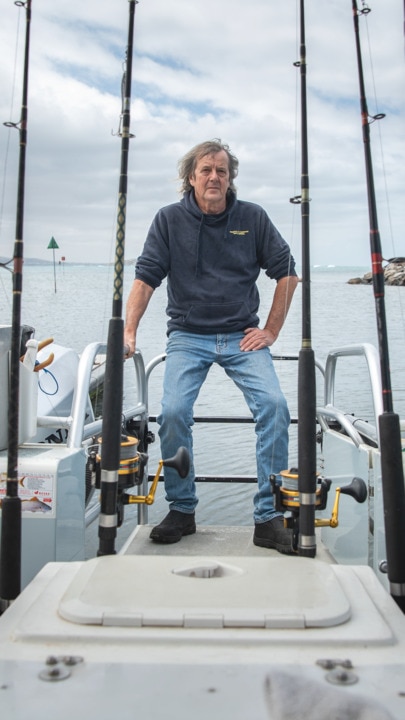
SA News
Don't miss out on the headlines from SA News. Followed categories will be added to My News.
Experts are scrambling to find a solution to the “unprecedented” toxic algae bloom event and are considering using River Murray water to flush the system, amid confirmation it had entered the Coorong.
Described as “the most serious event to occur to marine life in years” by SA oceanographer Dr Mike Bossley, the toxic algal bloom killing sharks, fish and other sea life across South Australia coastline since it first emerged around the Victor Harbor area in March.
Experts say above-average sea temperatures, calm marine conditions, extra “high in nutrients” waters brought by the River Murray floods, and an unusual cold-water upsurge all contributed to the algal bloom.
Satellite images show it has started moving eastwards, pushed by strong winds on May 26.
Environment Minister Susan Close said wild weather late last month pushed the algal bloom “around rather than out into the deeper ocean”.
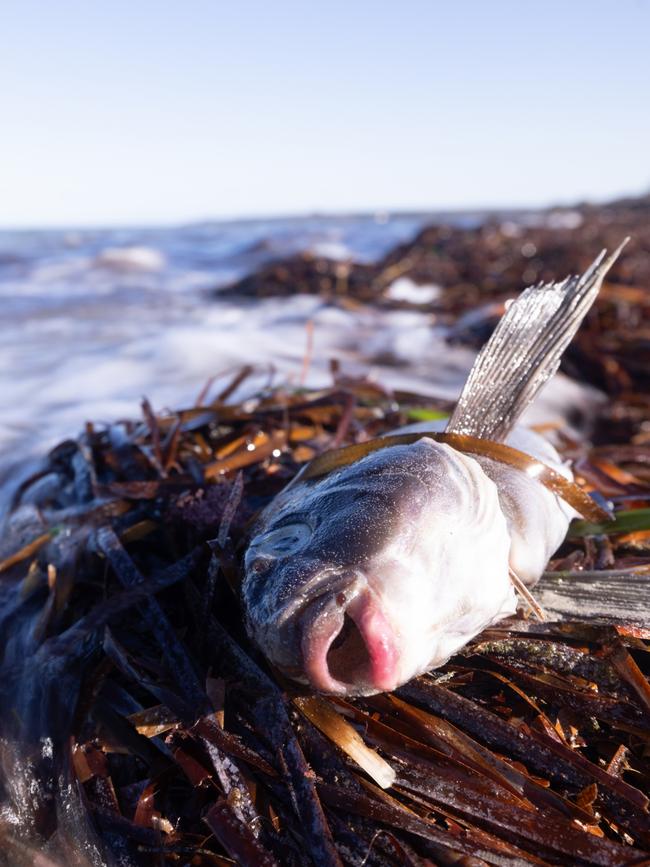
“That’s where we’ve seen it pop up in places it hadn’t been before,” Ms Close told FIVEaa.
The department said there was no known solution to dilute or dissipate the bloom, with Ms Close adding all options were being explored.
“Is it possible that enough water could be sent down the Murray to help flush it out? We’re looking at that,” she said.
“We’re not assuming that it will be easy to do that, we’ve got to try … to do anything we can.
“The scientist are scrambling to catch up with an event like this, which is for us, unprecedented.”
Her department confirmed the algal bloom was detected in the Coorong’s north lagoon on Wednesday, with testing to check if it's the same algae species killing fish across SA’s coast.
“We’re quite worried about the Coorong,” Ms Close said. “Once it’s in a body of water like that it doesn’t move around as much … then you’re worried that it’ll hang around for (longer) and do quite a bit of damage on the way.”
Glen Hill of Coorong Wild Seafood said flushing the Coorong with water from the Murray River would “improve the south lagoon”.
“Wind is the driving force, and it’s very seasonal. In wintertime, it fills up the Coorong, in summertime, it empties the Coorong out,” Mr Hill said.
“Water moves in and out of the south lagoon and then it’s flushed out of the south of the north lagoon and replaced with better quality water.
“That needs to happen, because the system loses about a metre of evaporation each year.”
Ms Close said the “rare” algal blooms were “very likely to happen again” because of environmental climate changes and the ocean absorbing the warmer conditions.
The department confirmed fish caught alive was safe to eat.
People are urged to avoid entering discoloured or foamy water, and places where marine creatures have been found dead or in poor health, and eating or touching dead marine wildlife.
As of May 10, there had been 1632 observations reported since February, identifying 218 different species killed.
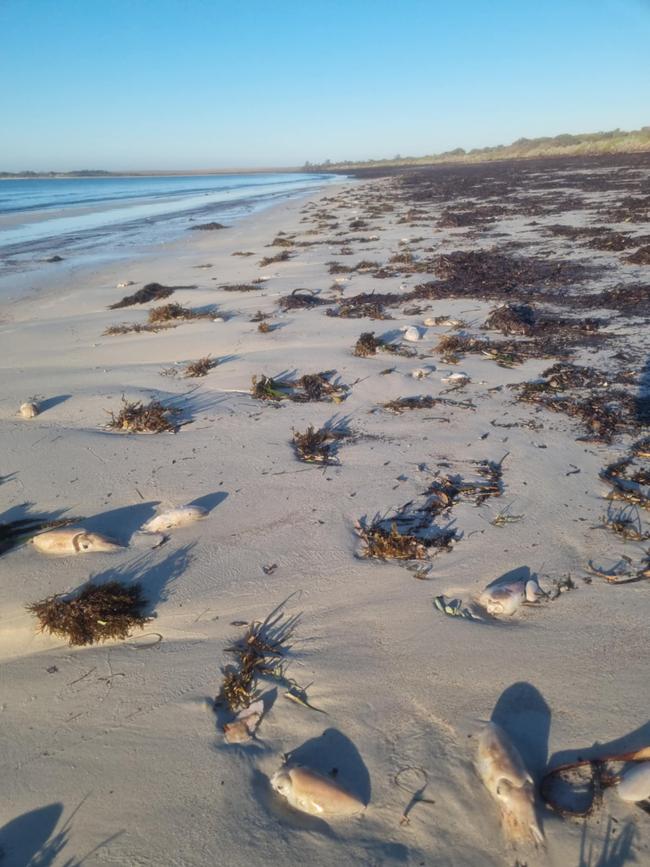
More than 200 species have fallen victim to the “toxic blanket” smothering South Australia’s shoreline, with sea floor marine life taking the biggest toll.
A report and journal authored by not-for-profit OzFish is using public reports of dead marine life sightings to identify, track and map where things are the worst.
Meanwhile, experts and locals say the long-term impact of the algal bloom entering the Coorong may be devastating on the delicate environment
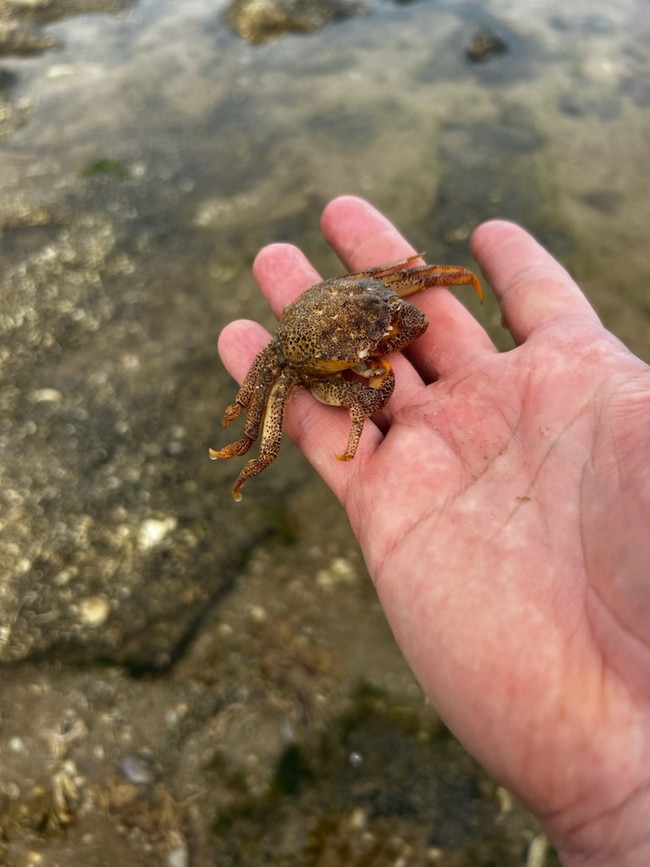
It comes as thousands of marine creatures wash up at Tumby Bay on the Eyre Peninsula.
The algal bloom spread to the north lagoon of the Ramsar-listed wetlands for the first time last week, causing water discolouration, thick foam, and killing marine life.
Mr Hill feared the bloom would destroy the delicate ecosystem’s food chain – creating a “snowball effect” on the fishing industry.
“It won’t do anything so much to the fish itself, it’s what it will do to the food chain,” Mr Hill said.
“It depends how much of the food chain is going to be left. If there’s no food, then you will go somewhere else to eat or die … that’s the key issue there.”
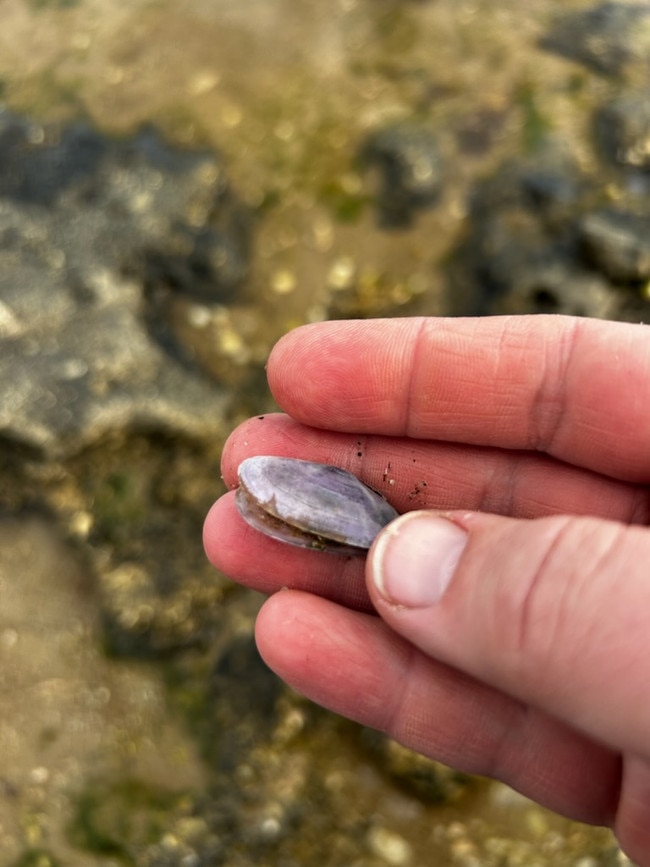
Mr Hill said it was too early to determine the long-term effects.
“The Coorong is really good at rebounding from things, so we’re sort of hoping that will play a major part in keeping the Coorong alive,” he said.
“But if that doesn’t, then … there will be no fish, so there’ll be no fishing industry, period.”
If the Coorong’s health significantly diminishes, Mr Hill said recreational fishers would also suffer.
“It’s going to be quite devastating, not just to the fishing industry, but to the whole of the local communities. There’s an awful lot to lose but it’s so early.”
Asher Dezery, executive officer of RecFish SA, said the organisation had noticed a “decrease in travel and fishing expenditure” and people fishing.
Mr Dezery said it was uncertain if eating fish from affected waters was safe.
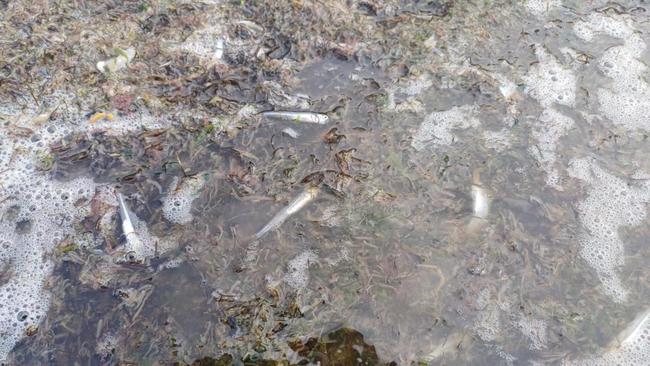
“You’ve got multiple types of algae present that have been identified,” he said.
“All of them have different impacts to the environment or release either different toxins or have different processes which affect fish.”
He was “really concerned” about the supply of future fish stock, particularly for businesses reliant on species such as mulloway or juvenile fish.
“Now that it’s in Coorong … that’s a really, really high priority.”
On Saturday, thousands of dead cuttlefish washed up on shorelines at Back Beach, Tumby Bay with local Samuel Kensworthy saying started counting but gave up at 200 – estimating around 2000-3000.
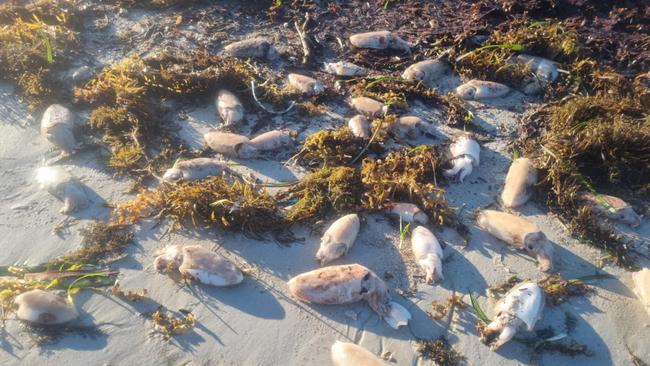
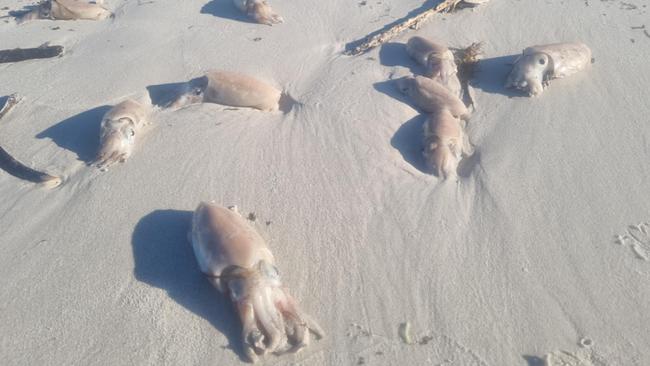

“I gave up as there were thousands and they just kept getting thicker the further up the beach I went,” Mr Kensworthy said
The former professional fisher said he was unsure what caused the mass kill, and reported it to PIRSA, which who took samples.
“The previous days there had been storms and king tides so it’s hard to tell,” he said.
“I’ve previously seen small amounts floating at sea and washed up on the beaches but nothing close to this scale before,” he said.
More Coverage
Originally published as Algal bloom has entered Coorong, as minister says Murray water could be used to flush system





